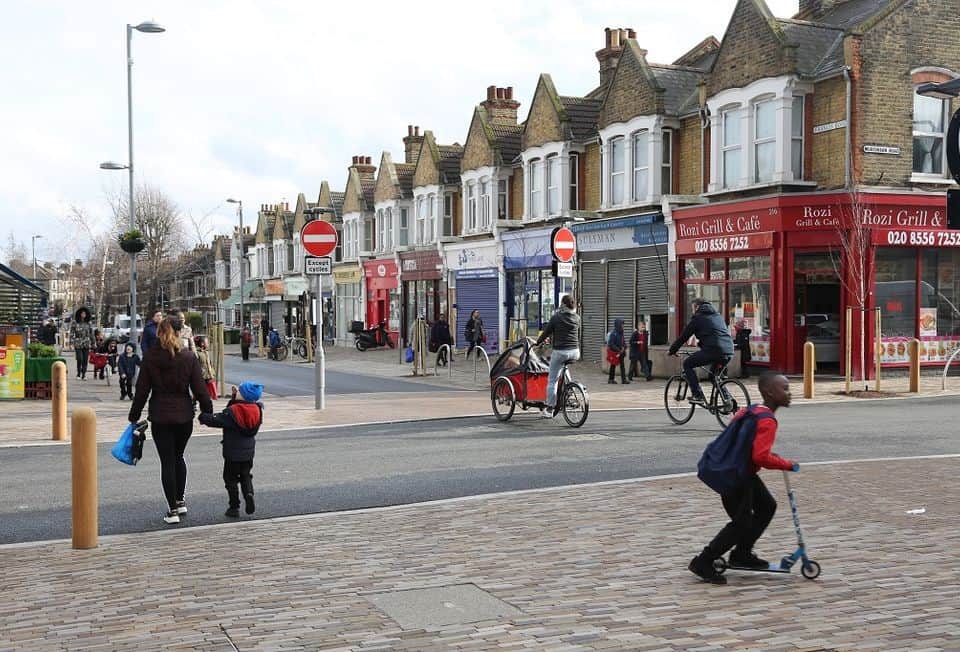The world’s biggest cities will always grab headlines. It’s not surprising that these cities, the companies based in them and the authorities that run them, are often where we look for examples of sustainable innovation to help us get to net-zero.
But smaller authorities can also be leaders in creating our zero-carbon future, with greater freedom to pioneer bold work – and more motivation to create effective partnerships – than their larger counterparts. Their importance might be accelerated by a trend towards hyper-local solutions, particularly in the wake of COVID-19, as embodied by Paris mayor Anne Hidalgo’s pledge to create a ‘15-minute city’ of distinct and thriving neighbourhoods.
Small isn’t just beautiful – it’s smart, dynamic and boundary-pushing.
By Simon Brammer, Head of Cities, first published by C40 cities
Proximity to communities helps small authorities to be pioneers
Smaller authorities can be testing grounds for innovation projects, using their close connection to their citizens to trial boundary-pushing projects. One excellent example is Enjoy Waltham Forest, an ambitious scheme to promote walking and cycling in the London Borough of Waltham Forest – one of 33 local authorities in a city where the key policymaker is the Mayor of London.
The borough secured £30m from a £100m mayoral competition to carry out the scheme, which was launched in September 2015. Waltham Forest’s approach featured new walking and cycling facilities, cycle training and free apps, improved public spaces like mini-gardens and street redesigns including pedestrianisation of shopping streets.
Implementing the scheme involved the controversial closure of some roads to traffic, which prompted protests. Waltham Forest Council committed to a deep dialogue with residents, consulting using online and offline communication platforms. They stressed that the project was not just about lowering carbon emissions – it was about promoting clean air, active lifestyles, nicer neighbourhoods and opportunities for local businesses. These are all co-benefits of climate action.
The council stayed the course, and six years later residents are keen to keep the changes. More are now walking and cycling, the air is less polluted, and life expectancy for young children in the borough has risen by six weeks because of the council’s transport improvements.
The programme has had significant influence on Transport for London’s citywide Healthy Streets programme, launched in 2017, which is now funding the creation of liveable neighbourhoods in several London boroughs. And it has attracted more than 50 visits from authorities elsewhere in the UK and abroad – showing how pioneering small authorities can have a big impact beyond their immediate area by sharing their experiences and expertise.

Partnerships between local authorities amplify impact
The limited resources of smaller authorities mean they have much to gain from developing new and exciting approaches to partnership working, and they are piloting models that can be effective with authorities of any size. With enhanced financial and political muscle, as well as deep expertise in local issues, partnerships of smaller authorities can be just as ambitious, if not more so, as big cities. Excellent local authority partnerships include those uniting around unique regional opportunities and shared problems.
For example, fuel poverty and low-quality housing in North West England prompted 14 authorities to launch the Cosy Homes in Lancashire (CHiL) partnership. In 2014, the year the scheme launched, 13.7%, of households in Lancashire were classified as fuel poor, compared to an English average of 10.9%.
Pooling members’ resources has helped the partnership install efficient gas and biomass boilers, insulate walls and lofts, and give advice on cutting energy use and switching tariffs. Operating as a partnership has allowed member authorities to access bulk-buying discounts, share access to legal advice, and develop an innovative approach to funding, making a whole-house approach to retrofitting possible.
Within a few years of the scheme launching 17,000 people were benefiting from warmer homes and lower energy bills, and 5,600 tonnes a year of CO2 emissions were being avoided thanks to improved building energy efficiency.
The key lesson from this process for other groups of local authorities is the importance of establishing the partnership as a separate legal entity, which boosted efficiency and gave each participating authority a clearer role. This helped to address the difficulties in coordinating between a large number of councils, and avoided the need to ask suppliers to sign multiple contracts with a wide range of different authorities.

